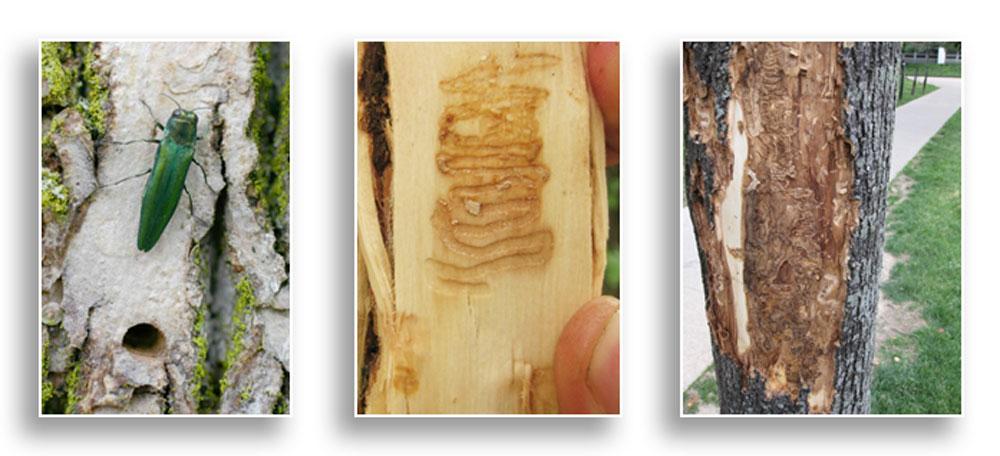Invasive Species: Good News on the EAB Front!
By Lynne Rieske-Kinney
Few invaders are as high profile or as destructive as the emerald ash borer, but in Kentucky we have some good news: biological control releases are taking hold, potentially holding their own against invading emerald ash borer populations.
Since its discovery in the US in 2002, and in Kentucky in 2009, emerald ash borer, Agrilus planipennis, has caused extensive ash mortality in affected areas, killing millions of trees and altering the composition and structure of wildland and urban forests. Transported from China as immature larvae hidden in solid wood packing material, emerald ash borer escaped and spread rapidly, and is now found it 25 US states and 2 Canadian provinces. Adult beetles feed on ash leaves and are relatively harmless, but immature larvae feed in the cambial tissue beneath the bark, forming extensive tunnels that girdle infested trees and cause rapid tree death. Emerald ash borer is an aggressive invader because North American ash species are highly susceptible, and there were no natural enemies in place to keep populations in check.

Insecticides can effectively protect ash on a small scale but are not sustainable over large areas or over extended time periods. Classical biological control has been implemented, where natural enemies collected from the native range of an invader (in this case, China) are transported and released in the invaded range (here in Kentucky). But in North America emerald ash borer kills native ash so quickly, and populations are so mobile, that establishing an effective and sustainable biological control program is challenging.
That led us to try a new approach where we’re using reduced rates of insecticides coupled with releases of biological control agents. In this way we hope to slow the process of ash decline and prolong the window of opportunity to allow these biological control agents to become established. For three years we’ve been protecting ash with reduced rates of insecticides and releasing three species of parasitic wasps native to China but approved for release against emerald ash borer in the US.
Chemical treatments have not impeded parasitization of emerald ash borer eggs or larvae. Two of the three classical biological control agents, Oobius agrili and Tetrastichus planipennisi, have been recovered from treated trees, demonstrating that they were successfully reproducing and indicating the compatibility of the two approaches. In addition we’ve discovered twelve native parasitoid species associating with emerald ash borer, some in several locations, including a parasitic wasp, Heterospilus sp., and a parasitic beetle, Catogenus rufus.

Importantly, non-target hymenopterans appeared unaffected by the insecticide applications. We found no negative effects of the chemical applications on native pollinators. Collectively these data suggest that judicious use of insecticides coupled with classical biological control may be an effective and sustainable approach to managing invading populations of emerald ash borer. All good news in our fight against the aggressive emerald ash borer!
Photography
- Emerald ash borer, (Agrilus planipennis) and exit hole (University of Illinois Extension newsletter)
- EAB boring pattern (University of Kentucky Forest Entomology lab)
- EAB damage (University of Kentucky Forest Entomology lab)
- Parasitic wasp, Heterospilus sp. (University of Kentucky Forest Entomology lab)
- Parasitic beetle, Catogenus rufus (University of Kentucky Forest Entomology lab)
About the Author
Dr. Lynne Rieske-Kinney is a Professor of Forest Entomology at the University of Kentucky. Her research includes addressing ecological questions in forest ecosystems in the context of herbivore-plant relations, feeding guild interactions, and interactions among plant stressors. Lynne is a Co-Founder of the Urban Forest Initiative. Email @ Lrieske@uky.edu
